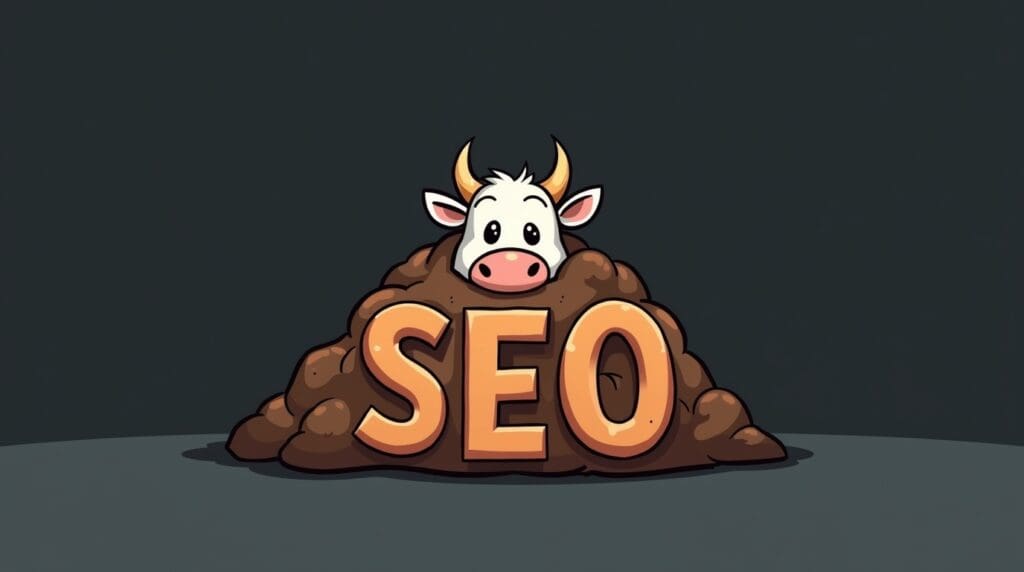After decades in the e‑commerce trenches, I’ve seen (and even fell victim to) the hack-of-the-week routine – agencies and/or “SEO Experts” pitching their “secret sauce,” charging thousands, and obsessing over tiny tweaks while skipping the big stuff. I’ve watched companies chase keyword tricks, swap title tags daily, and argue about site minutia while their site is slow, messy, and unhelpful. Here’s the simple truth – no one but Google knows the full algorithm. Everyone else is guessing. Luckily, Google tells us what they want in Search Essentials—helpful, people-first content on a technically sound site. So skip the shortcuts, and do these basics well. You’ll see, it’s not that hard.
What’s BS
- Secret tricks, keyword stuffing, and gimmicks.
- One‑click AI articles with no real value.
- Publishing daily just to look busy.
- Fancy pages that load slow and say little.
- Ignoring Google’s own guidance and hoping for a loophole.
What’s Real
- Make useful content. Answer the questions customers actually ask: sizing, shipping, setup, comparisons, troubleshooting. Use your own data (returns reasons, support tickets, on‑site search, reviews) to pick topics.
- Follow the rules search engines publish. Read Google’s Search Essentials. Make sure your site can be crawled and indexed. Use a clear structure, XML sitemaps, robots.txt, canonicals, and basic structured data (Product, FAQ, Article, Breadcrumb).
- Put people first. If it’s easy for users, Google will like you. Show price, shipping, specs, and next steps up front. Keep pages simple, scannable, and free of pop‑up clutter.
- Be fast, responsive, and accessible. Hit Core Web Vitals. Compress images, trim extra scripts, lazy‑load media. Design mobile‑first. Use proper headings, good contrast, keyboard access, alt text, and captions.
- E‑E‑A‑T in plain English. Google looks for Experience, Expertise, Authoritativeness, and Trust. It’s not a score—it’s proof. Show you’ve done the thing (real photos, lessons learned), know the topic (clear bios, credentials), others recognize you (reviews, links, partnerships), and you’re legit (policies, contact info, secure site).
- Use AI the right way. AI is a power tool, not a shortcut. Train a bot on your brand materials, have it pull your sources, and always add a human edit for accuracy and tone. Don’t ship generic fluff.
Lean tools that help
- Google Search Console for queries and indexing.
- Analytics (GA4 or similar) for engagement and conversions.
- PageSpeed Insights and WebPageTest for Core Web Vitals.
- A crawler (Screaming Frog or Sitebulb) for broken links and page basics.
- Ahrefs or Semrush for search intent and content gaps.
- A simple content calendar so you publish on purpose.
A simple plan to follow
- Step 1: Fix the basics. Clean 404s and bad redirects. Check your XML sitemap, robots.txt, and canonicals. Add simple schema where it fits.
- Step 2: Speed check. Compress images, defer non‑critical scripts, and test on real phones until you pass Core Web Vitals.
- Step 3: Clarify. Update top product pages and shipping/returns in plain language. Put answers up front.
- Step 4: Publish weekly. Ship one helpful piece based on support logs and on‑site search. Link it to the right product/category pages.
- Step 5: Review monthly. Use Search Console and analytics. Improve winners. Merge or remove weak pages. Repeat.
Bottom Line
It’s important to understand that a big reason that Google changes the algorithm regularly is to punish people trying to game the system. There are no shortcuts. Write content that actually helps, follow the technical guidelines Google provides, and keep your site fast, accessible, and honest. You can start this plan on your own—and keep improving it every month. You got this!





